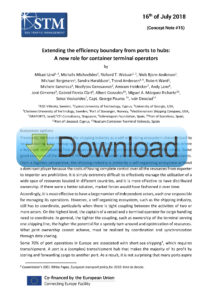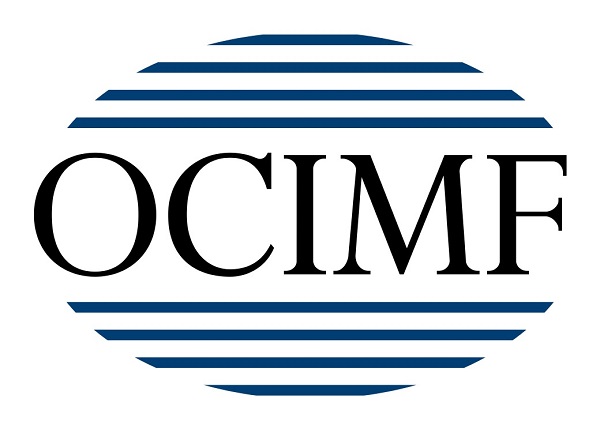Competition between container terminal operators and also within their respective lines, now organised under three major alliances, could be a major influence to raising supply chain and therefore environmental efficiency. The container shipping industry has rapidly consolidated in recent years as trade responded to economic turmoil. The result has been the formation of new alliances where container lines collaborate on slot efficiency, but not on commercial aspects that would bring in the wrath of competition authorities. Slot sharing and even vessel sharing among the larger container logistics firms is having a significant impact on terminal operations, and within it the levels of efficiency.
But can the alliances, sending large mega container vessels into the top ports create full port efficiency, or are they simply hindering it at these mega ports and the subsequent smaller ports that are then served through transshipment services? Competitiveness, and with it regulatory requirements that make these container firms cautious about cross industry collusion, has led to a situation where the sharing of information could be problematic, let alone agreeing to share information in a standard format. Terminal operators exist within a complex competitive and unpredictable environment. Their primary concern is to provide competitive tariffs to their customers – the shipping lines- especially in relation to other terminals in nearby ports.
In a new Concept Note from the STM Validation projects Port CDM (collaborative decision making) concept development team, a number of interviews with terminals involved in Port CDM testing have revealed that there is a significant list of obstacles to raising port operation efficiency.
This is the list of obstacles to creating port call efficiency from the latest concept note:
- Inefficient equipment handling (e.g., cranes & gangs). Unforeseen problems occur within a terminal such as faults or damage to cranes and other machinery that can cause a slowdown of container handling operations and prevent fast delivery to hinterland transport agents.
- Reduced availability of human resources for serving a ship
- Reduced or excess berth availability creating difficulties for terminal operators especially when there are situations such as the simultaneous arrival of multiple vessels.
- Reduced transparency or visibility of important planning data among key stakeholders. A terminal berth planner, as part of their daily job, has to communicate several times throughout the day with the shipping agents, as well as with the other port actors, such as tug boats, pilots and mooring services.
- Lack of coordination and synchronization, not only with the shipping companies/vessels, but also with the hinterland operators and most importantly with other stakeholders within the port. One main reason for this is that communication between terminals and other port call actors (agents, service providers, traffic control, pilots, etc.) is often still performed in a very basic way by point-2-point communication using telephone or email, due to their lack of better tools and/or common operational procedures.
- Missing information. ETAs and ETDs are often missing or not properly updated in the Port Community System (PCS). Moreover, important documentation for a vessel (such as type of cargo and vessel type, length, beam, call sign and MMSI) is often wrong or not provided, which means the berth planner has to prepare without the necessary information for allocating a vessel to an appropriate berth with the necessary equipment and resources for loading or unloading. By providing information on which cargo needs to be loaded onto a ship ahead of time, the cargo operation estimates can become more accurate.
- Narrow time windows. Another factor that can create problems for terminals is when time windows (the assigned time slots available for the ships to arrive at the port) are short. This is usually a condition observed in smaller ports with a single-entry point. It is a particularly challenging condition for the terminal operators at ports serving ships coming from close neighbouring ports only a few hours away of steaming. This leaves very little time for responding and dealing with unexpected situations (see Concept Note #5 on Short Sea Shipping). Some respondents argue that that port-2-port communication is most essential to provide a viable solution to improving this situation.
- Confidentiality concerns. The open sharing of data belonging to terminal customers might be difficult due to the reluctance of agents to share their data with competitors. Usually, there are strict rules in place regarding data confidentiality coming from the top management of the various companies. Data that could be used to infer the terminal’s productivity (such as, waiting times) might assist potential competitors in nearby ports. For example, as was reported from the port of Limassol: “If we provide how much time it takes for us to serve a ship and a shipowner learns about it and compares it with another terminal in a nearby port (for example Ashdod) they may prefer to go there as the service might be faster”. It is important to note here, however, that these privacy concerns do not apply for sharing non-sensitive data among particular port actors, if sufficient evidence is first provided that assures that the data will stay among the specific port actors.
The full concept note can be read here
Fathom-News


































